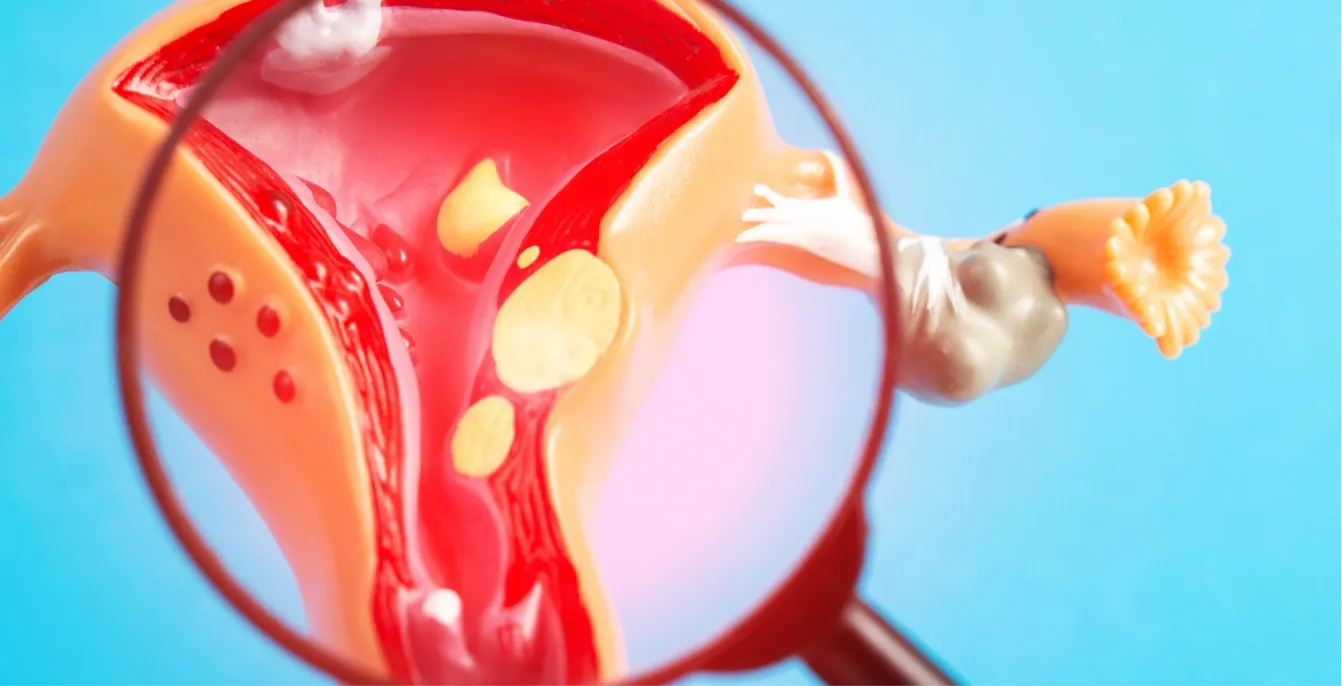
Uterine fibroids commonly affect women during their reproductive years. While they often cause no symptoms, fibroids can lead to heavy periods, pelvic pain, and fertility issues. Understanding the causes, symptoms, and treatment options for fibroids can help women manage this common condition effectively.
What Are Uterine Fibroids?
Uterine fibroids are non-cancerous growths that develop in the muscle layer of the uterus (womb). These are quite common and often appear during a woman's childbearing years. They can vary greatly in size and number. Fortunately, these growths are mostly benign and rarely become malignant.
What Are the Symptoms of Uterine Fibroids?
Many women with uterine fibroids do not experience any symptoms. Among those who do, symptoms can vary in severity depending on the size, location and number of fibroids. Common symptoms include:
- Heavy bleeding during one’s period
- Periods that last longer than usual
- Pelvic pain
- Frequent urination or trouble urinating
- Abdominal distension
- Pain during sex
- Constipation
- Lower back pain
What Are the Types of Uterine Fibroids?
Main types of uterine fibroids include:
- Intramural: This is the most common type of fibroid. They develop within the muscular wall of the uterus and may grow larger.
- Submucosal: This type of fibroid develops in the muscle layer beneath the womb's inner lining and grows into the uterine cavity.
- Subserosal: Located under the lining of the outer surface of the uterus, this type of fibroid can grow larger, making the uterus appear bigger on one side.
- Pedunculated: These fibroids are the least common type. They are attached to the uterine wall by a stalk or stem.
What Are the Risk Factors for Uterine Fibroids?
While the exact cause of uterine fibroids remains unknown, several factors are believed to contribute to their development. These include:
- Age: Fibroids are most common in women between the ages of 30 and 50, especially during the reproductive years.
- Family History: A woman with a close relative (mother or sister) who has had fibroids is at a higher risk of developing them.
- Hormonal Factors: Oestrogen and progesterone, the hormones that regulate the menstrual cycle, can influence fibroid growth. Fibroids often shrink after menopause when hormone levels decrease.
- Obesity: Women who are overweight or obese may have a higher risk of developing fibroids. Diet: High consumption of red meat and low intake of fruits and vegetables may be linked to an increased risk of fibroids.
- Early Menstruation: Women who began menstruating at an early age (before age 10) may be at a higher risk for fibroids as they are exposed to higher levels of oestrogen for a longer time.
How Are Uterine Fibroids Diagnosed?
Diagnosing uterine fibroids involves a combination of the following:
- Pelvic Examination: The doctor will gently palpate the area to detect abnormalities such as an enlarged uterus or lumps that may be indicative of fibroids.
- Ultrasound or MRI Scans: These imaging scans are useful for creating detailed images of the uterus and pelvic organs, which can help identify the size, location, and number of fibroids.
- Hysterosonography: This test involves the use of a saline solution to fill the uterus, allowing a clearer view of the uterine lining and fibroids.
- Hysteroscopy: In this test, a thin, lighted scope will be inserted through the vagina and cervix to examine the inside of the uterus, allowing a direct view of fibroids.
Treatments for Uterine Fibroids
The treatment for uterine fibroids depends on the severity of symptoms, the size and location of fibroids, and the patient’s age and desire for future pregnancy. These include:
Medications
Medications are often first used to treat mild to moderate symptoms of uterine fibroids; and, in some cases, even to shrink the fibroids. Common medications for fibroids include:
- Gonadotropin-releasing hormone (GnRH) Agonists: These medications lower oestrogen and progesterone levels, which helps to shrink fibroids and reduce uterine bleeding. This can also be used to shrink the fibroid prior to surgery.
- Progestins: Progestins can help thin the uterine lining and reduce heavy bleeding associated with fibroids. A hormonal intrauterine device (IUD) may be recommended. This is a small T-shaped device that is inserted into the uterus which releases small amounts of progestin.
- Non-steroidal anti-inflammatory drugs (NSAIDs): Your doctor may prescribe these to reduce pain associated with uterine fibroids.
- Tranexamic Acid: This medication works by helping one’s blood to clot, thereby reducing blood loss. It does not, however, improve menstrual cramping or shrink the fibroids.
Surgery
Surgery for uterine fibroids may be recommended if they cause fertility problems and symptoms that affect one’s quality of life. It may also be considered if non-surgical methods have not worked well. Surgical options include:
- Myomectomy: This procedure removes the uterine fibroids while preserving the uterus. This option is recommended for women who wish to preserve their fertility.
- Hysterectomy: This refers to the removal of the uterus. As it is a major surgery and it makes one no longer able to get pregnant, it is usually deemed as a last resort. It is performed when fibroids are causing severe symptoms or when there is a risk of malignancy.
- Endometrial Ablation: This procedure destroys the uterine lining to reduce heavy menstrual bleeding caused by fibroids.
- Uterine Fibroid Embolisation: This procedure aims to shrink fibroids by cutting off their blood supply. This may be an option to some women who wish to preserve their fertility.
If you are experiencing symptoms associated with uterine fibroids, please seek medical advice from a Singapore gynaecologist for an accurate diagnosis and prompt intervention.



